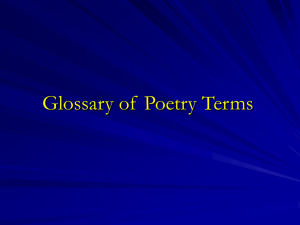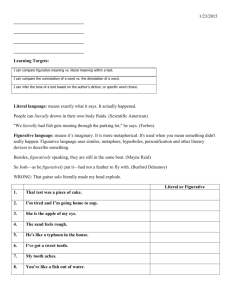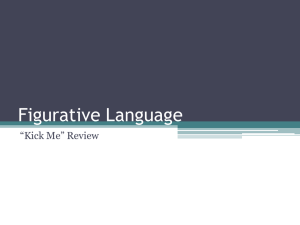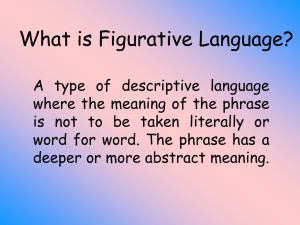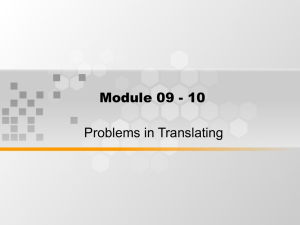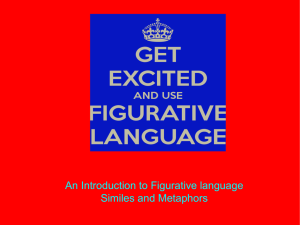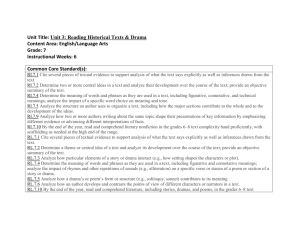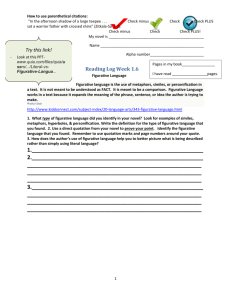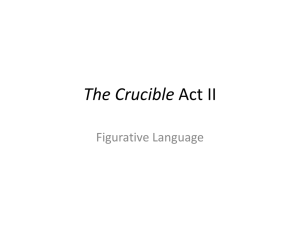Figurative and Connotative Language Explained
advertisement
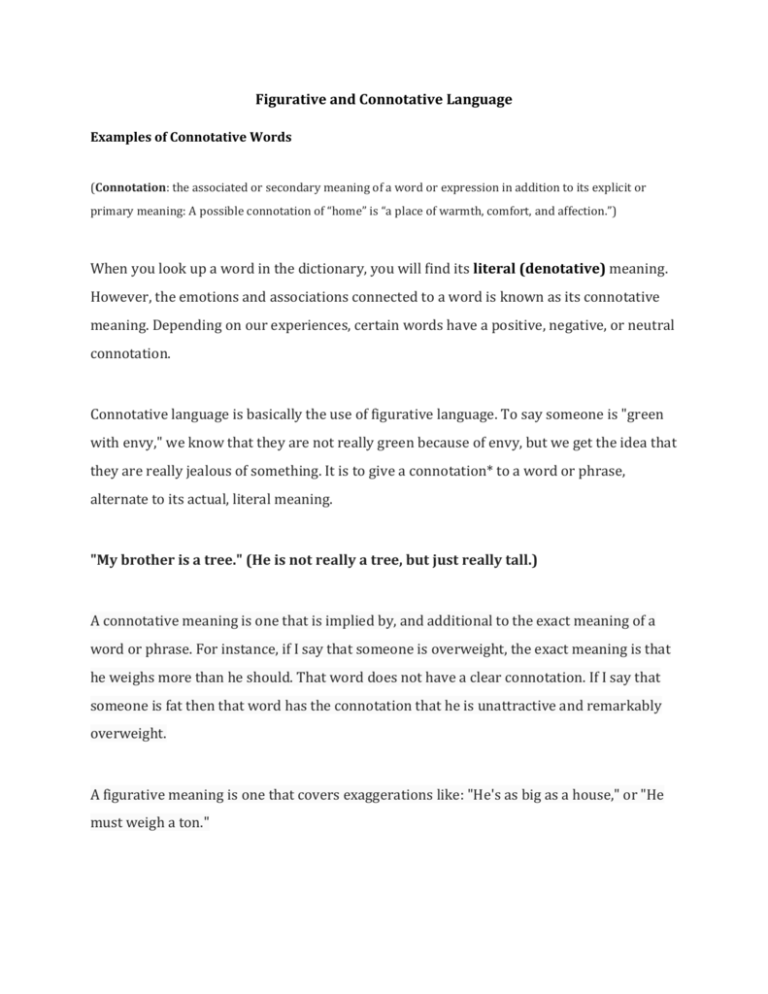
Figurative and Connotative Language Examples of Connotative Words (Connotation: the associated or secondary meaning of a word or expression in addition to its explicit or primary meaning: A possible connotation of “home” is “a place of warmth, comfort, and affection.”) When you look up a word in the dictionary, you will find its literal (denotative) meaning. However, the emotions and associations connected to a word is known as its connotative meaning. Depending on our experiences, certain words have a positive, negative, or neutral connotation. Connotative language is basically the use of figurative language. To say someone is "green with envy," we know that they are not really green because of envy, but we get the idea that they are really jealous of something. It is to give a connotation* to a word or phrase, alternate to its actual, literal meaning. "My brother is a tree." (He is not really a tree, but just really tall.) A connotative meaning is one that is implied by, and additional to the exact meaning of a word or phrase. For instance, if I say that someone is overweight, the exact meaning is that he weighs more than he should. That word does not have a clear connotation. If I say that someone is fat then that word has the connotation that he is unattractive and remarkably overweight. A figurative meaning is one that covers exaggerations like: "He's as big as a house," or "He must weigh a ton." Figurative Language- Figurative language can be found in literature and poetry where the writing appeals to the senses. It can do this by giving a word with a specific meaning, by comparing two things in such a way that you find the comparison interesting or by using words that have unusual constructions or sounds. (metaphors/similes) You are using figurative language when writing goes beyond the actual meanings of words so that the reader gains new insights into the objects or subjects in the work. One of the best ways to really understand the concept of figurative language is to see it in action such as with these examples: ● Alright, the sky misses the sun at night. ● The poorest man is the richest, and the rich are poor. ● Hear the mellow wedding bells. - Edgar Allen Poe ● Out of reach, I pull out with a screech. ● I move fast like a cheetah on the Serengeti. ● Her head was spinning from all the new information. ● The toast jumped out of the toaster. ● I'm so hungry I could eat a horse. ● The Sea lashed out in anger at the ships, unwilling to tolerate another battle. ● The Redcoats are coming! ● I’ve told you a million times to clean your room! An analogy is a comparison in which an idea or a thing is compared to another thing that is quite different from it. It aims at explaining that idea or thing by comparing it to something that is familiar. Metaphors and similes are tools used to draw an analogy. Therefore, analogy is more extensive and elaborate than either a simile or a metaphor. Consider the following example: “Structure of an atom is like a solar system. Nucleus is the sun and electrons are the planets revolving around their sun.” Here an atomic structure is compared to a solar system by using “like”. Therefore, it is a simile. Metaphor is used to relate the nucleus to the sun and the electrons to the planets without using words “like” or “as’. Hence, similes and metaphors are employed to develop an analogy.
